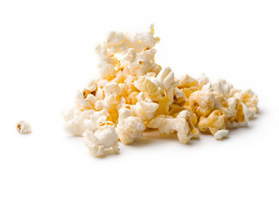Mongol: Spicy Mongolian Beef Recipe
Year Released: 2008
Directed by: Sergei Bodrov
Starring: Tadanobu Asano, Khulan Chuluun, Sun Honglei, Odnyam Odsuren
(R, 124 min.)

"Do not scorn a weak cub. He may become a brutal tiger." Mongol proverb
This epic is more about making love than war, and it is neither as sweeping nor as cheesy as Hollywood’s typical bigger than life sagas. With the feel of low-key authenticity more closely associated with the History Channel than the big screen, we see a young Genghis Khan not so much the perpetrator of violence, but as its victim.
All that stuff about raping, looting, and pillaging, I guess that’s for the other two parts of the would be trilogy. Even his name is not formidable; he’s just little Temudgin here, a nine year old doing what little Mongol nine year olds did back in 1171, choosing his bride. Only, even then Temudgin is determined. He chooses the feisty Borte from the relatively powerless tribe they visit instead of following the game plan and picking a bride from the Merkits, a more powerful tribe his father wishes to placate.
When his father falls victim to poisoning by an enemy tribe on the trip home, his “loyal” followers prove not to be, failing to honor Temudgin’s birthright and only postponing his death until he is older. Even Mongols demur when it comes to killing nine year olds, it seems. But that doesn’t stop them from holding him hostage until adulthood beckons, even providing the best of foods to help him grow faster, sort of like Hansel and Gretel’s witch trying to fatten them up in their cage.
Temudgin’s cage is called a cangue, a sort of portable pillory, and finally he has had enough and runs away with it on his shoulders. It seems his formative years are a constant struggle between capture and on the run desperation, and he escapes death almost too miraculously more than once. One scene ends with him falling through thin ice and plunging into frigid depths fully outfitted in heavy furs and animal skins. The next scene finds him a still figure on the desolate landscape rescued by a friendly tribe with no intervening explanation of how he managed to avoid a watery grave.
The friendly rescuers include a boy his own age, one Jamukha, and the two seal their bond by becoming blood brothers. Several years later, an adult Temudgin (Tadanobu Asano) calls upon this friendship for strong proof. He asks Jamukha (Sun Honglei) to help rescue his bride Borte (Khulan Chuluun) from the Merkits who have kidnapped her. Though he can’t understand why his friend should not just get himself a new bride, and certainly thinks going to war over a woman clearly ridiculous, Jamukha agrees to help, and together they and their warriors defeat the Merkits, receiving much plunder as well as the now very pregnant Borte.
The rescue has been postponed for many months, and it appears to viewers that the child Borte carries is not Temudgin’s, but he welcomes “his son” with open arms, certainly a tribute to his love and generosity. This same generosity is what puts a wedge between him and Jamukha. Forgoing the custom, Temudgin takes only ten percent of the pillage for himself, and divides the rest among his warriors, even reserving some shares for the widows and families of those killed. He then refuses Jamukha’s offer to be his second in command and leaves the next day without even a good bye. Worse yet, two of Jamukha’s best warriors leave with him, claiming Temudgin’s more generous habits their reasons for doing so.
Certainly, this film goes a long way to show the young Genghis Khan as a relatively enlightened man, a view his own countrymen hold in spite of his maligned name in the West. However, some Mongols bristle at perceived inaccuracies in the film, and few agreed to act in it. Temudgin is played by a Japanese actor, Jamukha by a Chinese, while Mongol Khulan Chuluun who plays Borte is a relative newcomer. Some of the flack from Mongols seems silly. They complain that Mongols did not play all the parts, but then we find out that many refused to take part in the production, possibly because it was directed by a Russian.
They also quibble about the curve of the swords being too circular, the wrong placement of the arrow on the bow, and the purely fictitious captivity of Temudgin by the Tangut, a Chinese nomadic tribe. Compared with what Hollywood, not to mention the Disney Empire, does to history, these seem minor, especially when we find that all we know about young Genghis Khan is through an oral tradition or a document called The Secret History of the Mongols written by a Chinese historian decades after his death.
So, forget about the minutia of history and abandon yourself to clattering hooves across the arid Steppes, clashing swords and silent arrows, and the mesmerizing throat singing that seems to spring from the very earth itself.
Prepare to meet the legendary Genghis Khan.
—Kathy Borich
Film-Loving Foodie
The tradition surrounding Ayrag (fermented mare’s milk) is so strong that to refuse it, even from an enemy, is a great insult. Rather than break this custom, Temudgin’s father drains the cup offered him by his enemy, only to face a painful death from its poison hours later.
I am told the drink is an acquired taste.
I’m opting for something a bit closer to our carnivorous habits, though, good old Mongolian Beef, our chosen recipe being one of the more spicy varieties.
You may also want to sample these other Asian recipes, such as
Spicy Mongolian Beef
- 1 lb. flank steak, thinly sliced (best to do when partially frozen, slice against grain)
- 1/2 c. soy sauce
- 2 tbsp. dry sherry
- 2 tsp. sesame oil
- 2 tbsp. cornstarch
- 2 tsp. crushed red peppers
- 4-6 whole red peppers
- 4 tbsp. oil for frying
- 4 bunches green onions, sliced diagonally
Combine first 7 ingredients. Marinate beef slices 30 minutes. Stir fry onions in hot oil in wok. Remove onions. Stir fry beef and re-add onions. Remember stir frying is done at highest heat for a very short time. Onions should be just tender, beef fried until color changes. Serve over hot rice.
Recipe Source: Cooks.com



 Rainy Day Rentals
Rainy Day Rentals